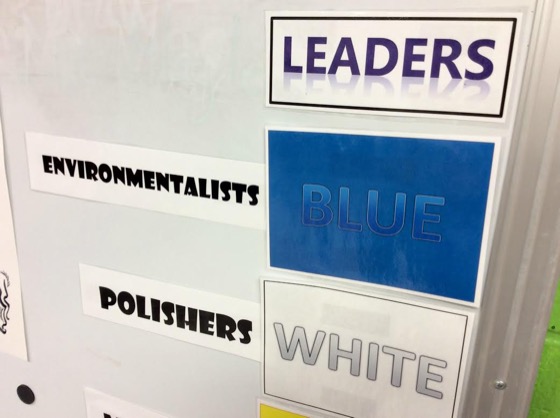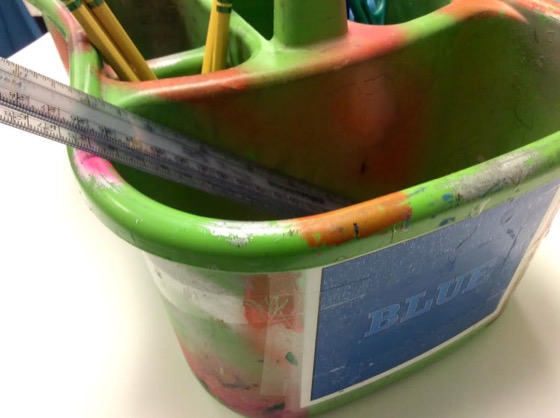When I was a kid, my sister used to vacuum her room in such a way that she would know if I had been in there simply by looking at the carpet. In her eyes, I was a complete mess while she was the family’s steadfast “neat freak.” Once college rolled around, I quickly learned that I either needed to start being organized or risk misplacing much of my stuff. Thus, my days of cleanliness and order began.
Unfortunately, those two characteristics are not always synonymous with my day job. There are moments in those last few minutes of class where I look around my room and observe an epic disaster of clay and paint. With no passing period to collect my sanity nor the stray scraps of paper scattered throughout my room, I was in need of help. I created several leadership jobs to help bring some order and cleanliness back to the art room.

How Leadership Jobs Work
When creating leadership jobs in your room, think about the jobs that need to be done every class period: What are those jobs? How many are there? Which are the most important? I have six tables in my classroom with four students at each table. So, it makes sense for me to have six leadership jobs that rotate on a weekly basis. Each table is responsible for completing the assigned job either throughout class or during clean up.
How to Assign Jobs
My first task for creating leadership jobs was figuring out how to let the students know what their assigned jobs were. After trying out several different ways of assigning jobs, I finally landed on one that seemed to flow quite smoothly. Each table is assigned a color. The color never changes, only the job for the week. Students know what their table color is by either looking at the festive bunting I hung above each table or looking at the labels on their table tubs. I printed out and laminated cards for each of the six colors as well as for each of the jobs. They are placed on my front board with magnets so I can easily move the job assignment each week.

How to Choose the Jobs
I’ve gone through many different job titles and job descriptions since I started teaching. Some of the job titles have been inspired by other art education bloggers and some are my own. Just keep in mind what jobs you want to see accomplished at the end of every class. Hopefully the list below can help spark some ideas for the jobs you want to accomplish in your room.
The Jobs
Environmentalists
Responsible for cleaning the art room floor so it sparkles. The students may use a dustpan and broom or their hands to accomplish the task. Environmentalists are also responsible for getting recyclable materials to the recycling bin.
Distributors
Responsible for passing out any and all supplies to all class members.
Collectors
Responsible for collecting any and all supplies and projects at the end of the class and placing them in the appropriate table folders.
Quiet Keepers
Responsible for keeping classroom noise at an acceptable level throughout class.
Polishers
Responsible for scrubbing the tables with rags at the end of class.
Direction Gurus
Responsible for listening to the directions throughout class. Students who missed a direction can find a direction guru to help them get back on track instead of asking the teacher.
Need more jobs? Try out one of these.
Table Tub Leaders
Responsible for organizing table tubs.
Sharpeners
Responsible for sharpening dull pencils.
Apron Leaders
Responsible for sorting, organizing, and/or folding aprons and paint shirts.
Sink Scrubbers
Responsible for washing any materials and supplies that get dirty throughout class.
Glue Bottle Busser
Responsible for wiping off and closing all glue bottles.
Disinfectors
Responsible for scrubbing down high traffic areas (handles, doorknobs, pencil sharpeners, etc.) with disinfectant wipes.
Paper Sorters
Responsible for sorting leftover paper scraps into the correct colored bins.
Do you have a creative job we missed? Share below!
Do you have students help you clean? Tell us about it.
Magazine articles and podcasts are opinions of professional education contributors and do not necessarily represent the position of the Art of Education University (AOEU) or its academic offerings. Contributors use terms in the way they are most often talked about in the scope of their educational experiences.




